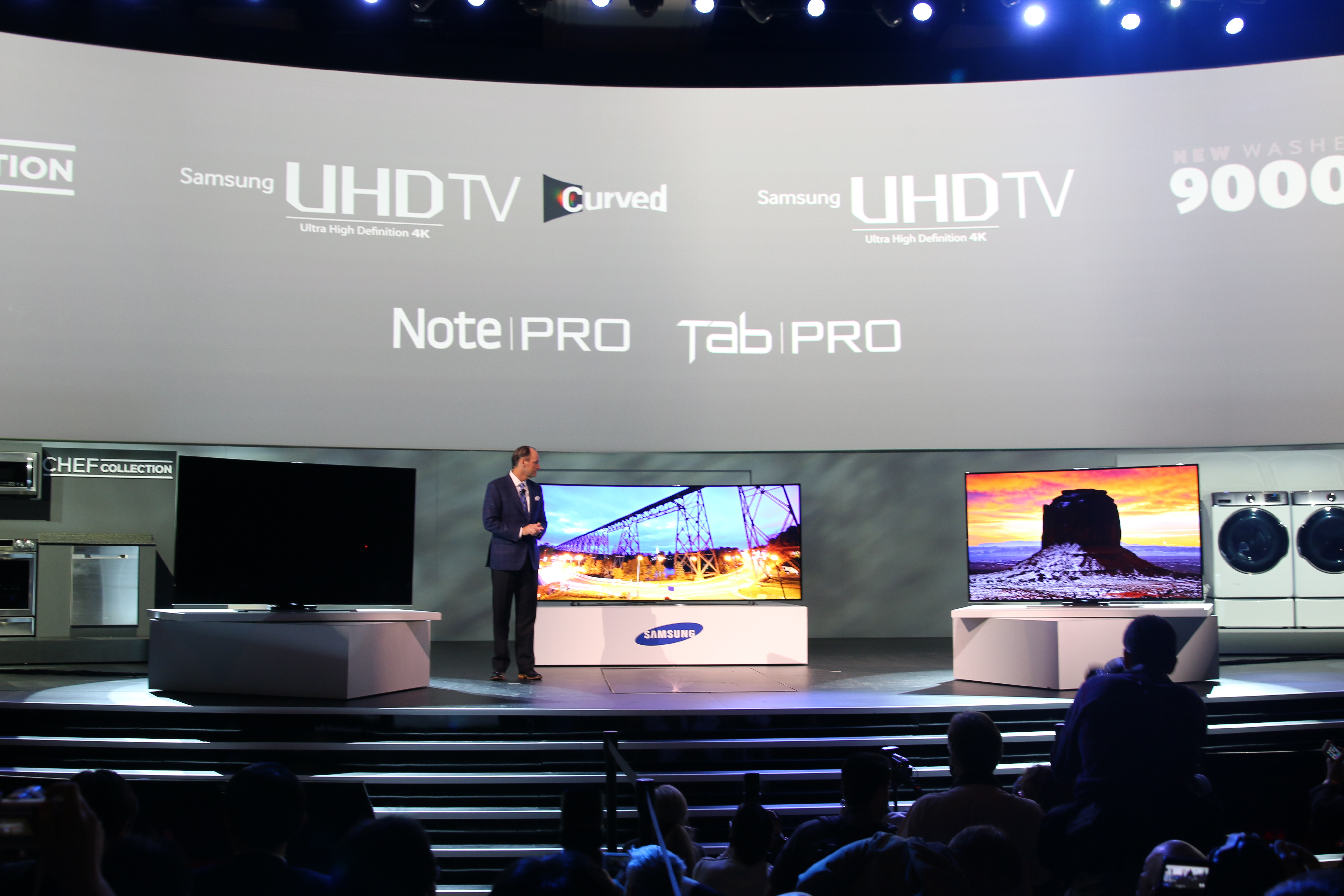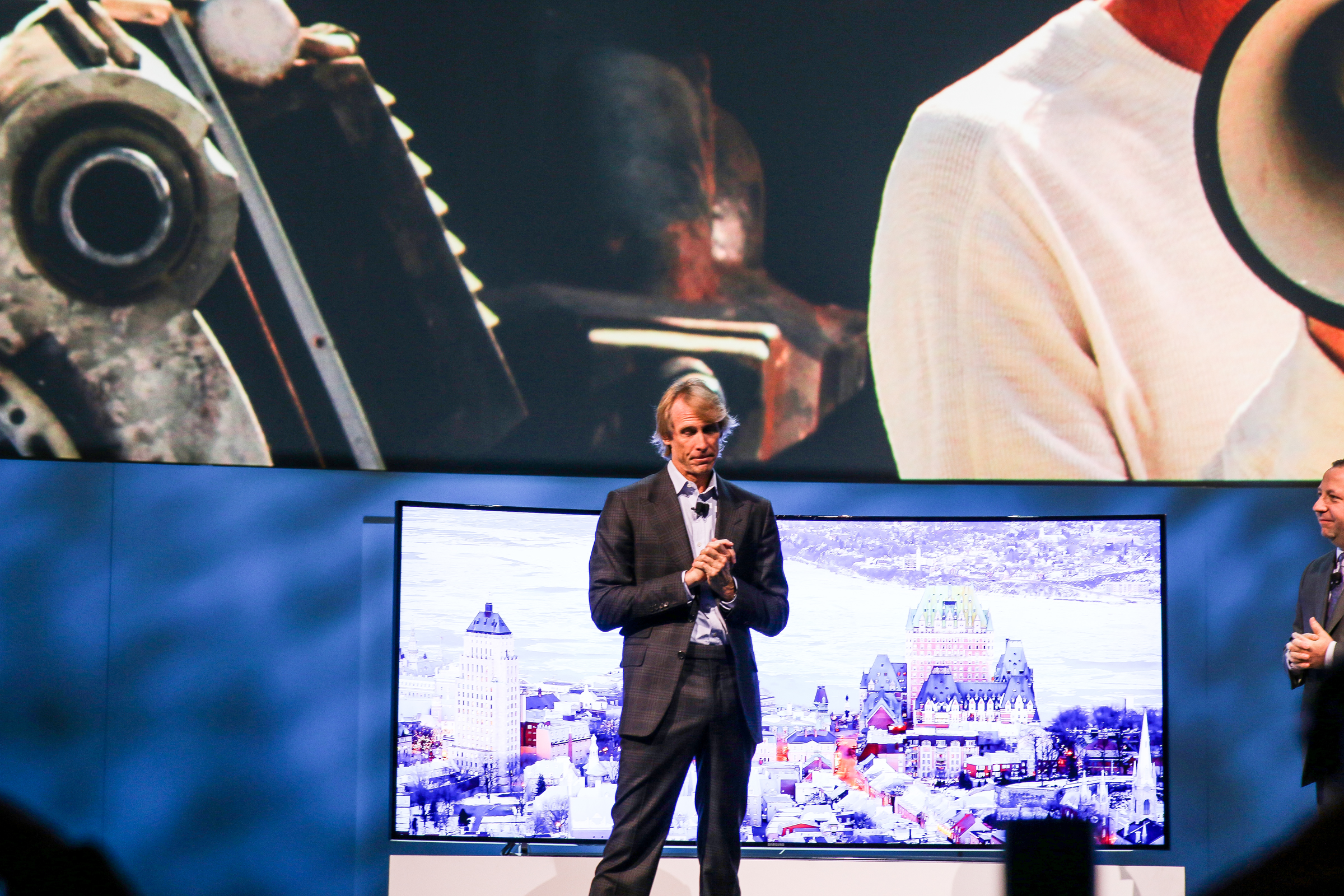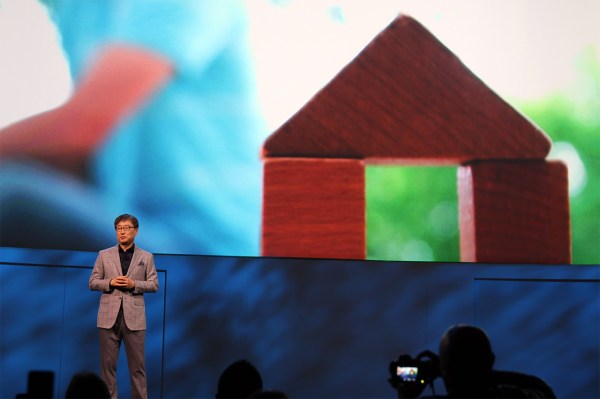This year at Samsung’s CES special pre-conference press conference, the tone was somewhat different from years past: CEO and Chairman Kwon Oh Hyun started things off with an explanation of the market opportunity that stands before Samsung for the future. In some ways, it felt like a do-over of the special conference Samsung held last year for investors and analysts, which was designed to allay fears that the company has nowhere left to grow.
Samsung essentially argued that its growth will come from a deepening desire for innovation and technological change from consumers. Hyun noted that during the past 10 years consumers have embraced change faster than ever before, and that during the next decade they’ll embrace new tech even faster. The innovation will take place in 4 key areas that Hyun said will “change our world.”
Connectivity is the first of the four. Reach of smartphones and internet is growing, and adoption of these devices and services is skyrocketing around the world. It’s no secret that this is the case, of course, but it paves the way for Samsung’s vision of a broadly defined connected home.
A second pillar is urbanization. Half the world population lives in cities, Hyun noted, and that will be 60 percent by 2030. As populations grow, cities need to get smarter, Hyun says, and Samsung will help them do that. Plus, populations are aging, and in 10 years 1 billion people will be over 60. Hyun asked how tech make the lives of an aging population more comfortable.
 Finally, there’s an opportunity to address changing climate and the challenges that brings up. Extreme weather events such as hurricanes have increased by 200 percent since 1990, he says. the home becomes the important place in everyone’s life in times of dramatic weather changes. So what tech will consumers need in their home/shelter of the future? It has to protect, be flexible and be responsive, and those are the guiding values Samsung is using to form its overall market strategy.
Finally, there’s an opportunity to address changing climate and the challenges that brings up. Extreme weather events such as hurricanes have increased by 200 percent since 1990, he says. the home becomes the important place in everyone’s life in times of dramatic weather changes. So what tech will consumers need in their home/shelter of the future? It has to protect, be flexible and be responsive, and those are the guiding values Samsung is using to form its overall market strategy.
To protect means keeping people safe from outside threats including diseases, pollution and crime, so it’s likely we’ll see more connected security and home air quality/health monitoring gadgets. To be flexible means adapting to the changing nature of the average person’s work/life balance. Hyun noted that 11 million Americans now bring their work home and that number is always growing. As a result, our home spaces need to be open and multifunctional, with the ability to create and consume content anywhere, and any time.
Finally, our homes need to be responsive, which means according to Hyun that we want homes that understand our needs and show us key information and put us in control of our lives. Combined, Hyun says these three trends will shape the future home and provide Samsung with a huge opportunity for growth. Part of why is because the company makes chips, display panels and other parts, as well as devices, services and more.
The company pointed to its new Smart Home product on display at CES as a sign of where it’s seeing opportunity. This features things like remote doctor’s visits via TV for health and safety, as well as simultaneous TV viewing in the living room and on screens built into appliances for a more flexible living space that makes spending time with family easier. There are also new control interfaces, like using your Galaxy Gear to tell your home you’re going out and having it turn off air conditioning and lights as you exit.
 From this big picture perspective, Samsung then brought out other executives to look at the various parts of its business in more detail, but arguably the most important message was this first one delivered from the helm about where Samsung sees its opportunity lying in the years to come. Sure, they trotted out Mark Cuban and Michael Bay (who choked massively, getting out barely a sentence before walking off stage thanks to a teleprompter fail). They drew a lot of eager photographers close to the stage with a totally useless “Bendable TV” that can go from standard flat to gimmicky curved screen with a button press. They introduced new tablets that actually do seem to do a lot more with Android than most company’s light skinning has done thus far.
From this big picture perspective, Samsung then brought out other executives to look at the various parts of its business in more detail, but arguably the most important message was this first one delivered from the helm about where Samsung sees its opportunity lying in the years to come. Sure, they trotted out Mark Cuban and Michael Bay (who choked massively, getting out barely a sentence before walking off stage thanks to a teleprompter fail). They drew a lot of eager photographers close to the stage with a totally useless “Bendable TV” that can go from standard flat to gimmicky curved screen with a button press. They introduced new tablets that actually do seem to do a lot more with Android than most company’s light skinning has done thus far.
Across all of this, though, the main message was clearly one of reassurance. Samsung ended last year and started this one-off with some significant drops in share value, and it needs to communicate more than just a continued commitment to making top-tier smartphones and tablets. The big picture vision of a connected future does posit a lot of growth potential for the right company, but it remains to be seen whether the parts demoed on stage today will add up to Hyun’s rosy picture of a tomorrow when Samsung makes your everything.
